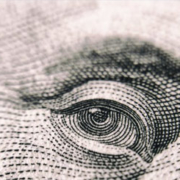The Selfish Gene, its Extended Phenotypic Effects and Human Cooperation
It took me until my 43rd year to read “The Selfish Gene,” written in 1976 by Richard Dawkins. In many respects, it is a testament to its success that I felt no compelling desire to read it. What I perceived to be its central message had been absorbed into the very fabric of our culture. In summary, briefly, I thought the message was simply put: we are driven to survive by our genes and via competitive and selfish natural selection; we follow our own self-interest in order to survive and procreate; genes that adapt more quickly and better to the competitive world survive at the expense of the others, and so forth. The state of nature is a Hobbesian nightmare of there being “no society; and which is worst of all, continual fear, and danger of violent death; and the life of man, solitary, poor, nasty, brutish, and short.” [1] (1651: 62 ) Its is survival of the fittest for most, but armed with this knowledge, we could overcome some of these rough edges of life. This message became his new self christened “meme” that has seeped into our own cultural way of thinking. Also, armed with this knowledge, we should restrain our biological drive and build a more co-operative world. [1] Richard Dawkins vs Cardinal George Pell on Q&A (10-4-2012) In watching this very well balanced debate , I do recall hearing Dawkins describe this view as a Thatcherite nightmare and something he was diametrically opposed to , or sentiments of that sort, http://www.youtube.com/watch?v=tD1QHO_AVZA Needless to say, the book is rich with information on Darwinian evolution and easily communicated to the intelligent layperson. I consider I fall into that latter category and am grateful the new understanding it has given to my knowledge of the world. However, I think that he has got one point for sure, the wrong way around: we should not restrain our genes to build a more co-operative world, but embrace them and their phenotypic effects. As I will suggest, successful phenotypic effects are not as he assumes them to be when it comes to the catallactics of the market place. The view of Dawkins – that we need to put restraint on our genes to effect a more co-operative outcome for all – would imply that if we do not, what is called Social Darwinism is as natural as the selfish gene itself. In the closing lines of the Selfish Gene, Dawkins urges us rebel against this natural disposition:
It is possible that yet another unique quality of man is a capacity for genuine, disinterested, true altruism. I hope so, but I am not going to argue the case one way or the other, nor to speculate over its possible memic evolution. The point I am making now is that, even if we look on the dark side and assume that individual man is fundamentally selfish, our conscious foresight—our capacity to simulate the future in imagination—could save us from the worst selfish excesses of the blind replicators. We have at least the mental equipment to foster our long-term selfish interests rather than merely our short-term selfish interests. We can see the long-term benefits of participating in a ‘conspiracy of doves’, and we can sit down together to discuss ways of making the conspiracy work. We have the power to defy the selfish genes of our birth and, if necessary, the selfish memes of our indoctrination. We can even discuss ways of deliberately cultivating and nurturing pure, disinterested altruism— something that has no place in nature, something that has never existed before in the whole history of the world. We are built as gene machines and cultured as meme machines, but we have the power to turn against our creators. We, alone on earth, can rebel against the tyranny of the selfish replicators.” Dawkins (1976: 215).
Being new to biology (I believe my sum total of expertise is gaining an ‘O’ Level in it) , I thought I should read some Darwin to see if it really does follow that if you accept natural selection you must move, as night moves towards day, to the whole of human society running itself as a group of individualistic selfish replicators. Social Darwinism has nothing, seemingly, to do with Darwin himself. He never advocated a social policy of promotion of the natural tendency to the survival of the fittest. He thought that appropriation by others was the key in advancing man in society. ‘The Descent of Man’ is his book that touches most on these issues:
We may therefore conclude that primeval man, at a very remote period, was influenced by the praise and blame of his fellows. It is obvious, that the members of the same tribe would approve of conduct which appeared to them to be for the general good, and would reprobate that which appeared evil. To do good unto others- to do unto others as ye would they should do unto you- is the foundation-stone of morality. It is, therefore, hardly possible to exaggerate the importance during rude times of the love of praise and the dread of blame. A man who was not impelled by any deep, instinctive feeling, to sacrifice his life for the good of others, yet was roused to such actions by a sense of glory, would by his example excite the same wish for glory in other men, and would strengthen by exercise the noble feeling of admiration. He might thus do far more good to his tribe than by begetting offspring with a tendency to inherit his own high character.
With increased experience and reason, man perceives the more remote consequences of his actions, and the self-regarding virtues, such as temperance, chastity, &c., which during early times are, as we have before seen, utterly disregarded, come to be highly esteemed or even held sacred. I need not, however, repeat what I have said on this head in the fourth chapter. Ultimately our moral sense or conscience becomes a highly complex sentiment- originating in the social instincts, largely guided by the approbation of our fellow-men, ruled by reason, self-interest, and in later times by deep religious feelings, and confirmed by instruction and habit.
It must not be forgotten that although a high standard of morality gives but a slight or no advantage to each individual man and his children over the other men of the same tribe, yet that an increase in the number of well-endowed men and an advancement in the standard of morality will certainly give an immense advantage to one tribe over another. A tribe including many members who, from possessing in a high degree the spirit of patriotism, fidelity, obedience, courage, and sympathy, were always ready to aid one another, and to sacrifice themselves for the common good, would be victorious over most other tribes; and this would be natural selection. At all times throughout the world tribes have supplanted other tribes; and as morality is one important element in their success, the standard of morality and the number of well-endowed men will thus everywhere tend to rise and increase.” (1896:131/2).
When I first read this passage , I was taken aback at how similar this was to the approach of Adam Smith and also Immanuel Kant to this Darwinian categorical imperative . Concerning Darwin’s words about helping the weaker members of society or not in our struggle for survival , further on in the Descent we have:
I have hitherto only considered the advancement of man from a semi-human condition to that of the modern savage. But some remarks on the action of natural selection on civilised nations may be worth adding. This subject has been ably discussed by Mr. W. R. Greg,* and previously by Mr. Wallace and Mr. Galton. Most of my remarks are taken from these three authors. With savages, the weak in body or mind are soon eliminated; and those that survive commonly exhibit a vigorous state of health. We civilised men, on the other hand, do our utmost to check the process of elimination; we build asylums for the imbecile, the maimed, and the sick; we institute poor-laws; and our medical men exert their utmost skill to save the life of every one to the last moment. There is reason to believe that vaccination has preserved thousands, who from a weak constitution would formerly have succumbed to small-pox. Thus the weak members of civilised societies propagate their kind. No one who has attended to the breeding of domestic animals will doubt that this must be highly injurious to the race of man. It is surprising how soon a want of care, or care wrongly directed, leads to the degeneration of a domestic race; but excepting in the case of man himself, hardly any one is so ignorant as to allow his worst animals to breed. (1896:133/4)
It would appear that Darwin very much did not advocate anything that has come to be associated with the term ‘Social Darwinism’, if we mean by this that we should relish in the economic survival of the fittest at the expense of our fellow compatriots. Dawkins sits firmly in the same tradition as his great inspiration on these matters : Darwin no less. From this I conclude that Social Darwinism is more of a “straw-man” [2] style argument, by people unfamiliar with the works on Darwin and market catallactics. [2] For another straw-man attack, please see the unforgettable Mary Midgley who has a track record of attacking a more mythical Dawkins , http://www.guardian.co.uk/commentisfree/belief/2009/apr/20/religion-philosophy-hobbes-dawkins-selfishness here http://web.archive.org/web/20051031044834/http://www.royalinstitutephilosophy.org/articles/article.php?id=15 and here , http://www.jstor.org/stable/3751039 At first blush it would seem that Darwinism has nothing to tell us about social policy of any particular interest – if, like me, you are a supporter of some of the basic tenets of liberalism. Ludwig von Mises, arguably one the greatest economists of all time in his magisterial ‘Human Action’ (1949), points to three reasons that don’t chime with Liberalism which are falsely grabbed hold of as tenets of Darwinism and used to advance either an anti-liberal right-wing or and an anti-liberal left-wing agenda. An initial point to observe is that reason itself, and the rational mind, is the first thing thrown out the window by the despot as he can conveniently argue he is only acting in accordance with his nature. War is thus good to weed out the weaklings, strengthen the strain, and purify the race for the betterment of all (his favoured types). Again, I cannot see this thought emanating from the mouth or pen of a Darwin or Dawkins! The Argument that men are unequal gives license to abuse, as Mises points out:
… the advocates of a biological philosophy of society, natural science has demonstrated in an irrefutable way that men are different. There is no room left in the framework of an experimental observation of natural phenomena for such a concept as natural rights. Nature is unfeeling and insensible with regard to any being’s life and happiness. Nature is iron necessity and regularity. It is metaphysical nonsense to link together the “slippery” and vague notion of liberty and the unchangeable absolute laws of cosmic order. Thus the fundamental idea of liberalism is unmasked as a fallacy. (1949:174)
Shorn from the natural law of the divine, and armed with what they saw as the biological implications of natural selection and the irrefutable non-creation of all being equal led to unspeakable totalitarian genocides and reigns of terror across the globe unparalled in our history. As Mises points out:
… the teachings of utilitarian philosophy and cIassical economics have nothing at all to do with the doctrine of natural right. With them the only point that matters is social utility. They recommend popular government, private property, tolerance, and freedom not because they are natural and just, but because they are beneficial. The core of Ricardo’s philosophy is the demonstration that social cooperation and division of labor between men who are in every regard superior and more efficient and men who are in every regard inferior and less efficient is beneficial to both groups. Bentham, the radical, shouted: “Natural rights is simple nonsense: natural and imprescriptible rights, rhetorical nonsense.” With him “the sole object of government ought to be the greatest happiness of the greatest possible number of the community……. The Utilitarians do not combat arbitrary government and privileges because they are against natural law but because they are detrimental to prosperity. They recommend equality under the civil law not because men are equal but because such a policy is beneficial to the commonweal. In rejecting the illusory notions of natural law and human equality modern biology only repeated what the utilitarian champions of liberalism and democracy long before had taught in a much more persuasive way. It is obvious that no biological doctrine can ever invalidate what utilitarian philosophy says about the social utility of democratic government, private property, freedom, and equality under the law. (1949:174)
Concerning the social implications of social Darwinism, liberalism plans for eternal peace, social Darwinism for a war of all against all and, as discussed, neither the great master Darwin and his most modern advocate, Dawkins, would agree with the former extrapolation from biology to social science. I am sure – and Mises is very clear – that what applies to relations between men and morbific microbes are very different indeed, as we have the power of reason and they don’t. Thus, he says:
It need not always be a war of extermination such as in the relations between men and morbific microbes. Reason has demonstrated that, for man, the most adequate means of improving his condition is social co-operation and division of labor. They are man’s foremost tool in his struggle for survival. But they can work only where there is peace. Wars, civil wars, and revolutions are detrimental to man’s success in the struggle for existence because they disintegrate the apparatus of social cooperation.” Mises (1949: 175)
In the Introduction to ‘The Wealth of Nations’ by Adam Smith, he establishes the fact that those nations who live in an autarkic way remain savage and are hunter-gatherer focused with small populations, and those that embrace the specialization of the division of labour grow to massive size , sustaining many more people in a better standard of living . The purpose of the book is to discover why and how this happens, as this is, indeed, the story of the wealth of our nation. It is interesting to note that in his exploration of why this division of labour emerges which does allow detailed specialization to employ more people to produce more things of use for more people, it is not a faculty of our reason , but some primordial urge to truck and barter. Naturally I cannot concur with the giant Smith on this point.
This division of labour, from which so many advantages are derived, is not originally the effect of any human wisdom, which foresees and intends that general opulence to which it gives occasion. It is the necessary, though very slow and gradual, consequence of a certain propensity in human nature, which has in view no such extensive utility; the propensity to truck, barter, and exchange one thing for another.
Whether this propensity be one of those original principles in human nature, of which no further account can be given, or whether, as seems more probable, it be the necessary consequence of the faculties of reason and speech, it belongs not to our present subject to inquire. It is common to all men, and to be found in no other race of animals, which seem to know neither this nor any other species of contracts. (1784: 20)
I hold this to be nonsense. Ancient man – maybe even Nick the Neanderthal – must have rationally had to think: “if I do X service(s) or provide Y good(s) to my fellow man – homo sapiens stone-age Sid – he will in return give me X service(s) or Y good(s) which he is doing/producing that I want that he can make/do better than me.” I don’t see a random propensity of blind chance kicking off the whole universal division of labour from which springs forth the spectacular material gains, medical gains, knowledge gains, artistic gains and so forth that is unmatched in the animal kingdom. The ability to reason for this is our key distinguishing feature from the rest. Dawkins talks of replicators within us blindly replicating and those that replicate with amendments to the antecedent copy that are more conducive to successful competition will survive and prosper. Now, although we can’t prove the mind and body are one on strict scientific falsificationist experimentation and the mystery of why/how consciousness is still with us, you cannot deny that the two are inextricably linked in the physical world we occupy . Take parts of my brain out and you will soon find my consciousness goes. Where it goes, I have no idea. Commenting on the development of the consciousness Dawkins says: “Why this should have happened is, to me, the most profound mystery facing modern biology.” (1976:63) Dawkins highlights reasons as allowing us to be able to simulate events in advance as being able to predict outcomes that are detrimental to survival so that they can be avoided, and conducive to survival so it is advantageous to participate in them. This evolutionary process culminates in what I suggest we call reason. I hold that if we follow Dawkins, we can see we have evolved to develop reason to be able to allow us to acquire control over the division of labour via vast swathes of the resources of world that to our ancestors were hitherto unimaginable. For our nourishment, our material benefit, and through procreation, is reason focused . Thus the genes within us – or I just prefer to say “us” as a unified whole gene-consciousness body – have phenotypic effects not only on our fellow man, but the entire world with which we interact. For all I know, we could even be starting to have phenotypic effects outside of our world. Dawkins alludes to the phenotypic effects of genes and how they effect the world in this passage:
The phenotypic effects of a gene are normally seen as all the effects that it has on the body in which it sits. This is the conventional definition. But we shall now see that the phenotypic effects of a gene need to be thought of as all the effects that it has on the world. (1989:238)
However , he only hints at modest effects and gives some very specific, mundane (from a human point of view) examples:
All that I am going to add is that the tools may reach outside the individual body wall. What might it mean in practice to speak of a gene as having an extended phenotypic effect on the world outside the body in which it sits? Examples that spring to mind are artefacts like beaver dams, bird nests and caddis houses. (1989:238)
Unknown to Dawkins, I think he has connected biology correctly with the social sciences, via the extended phenotypic effect of what he calls “simulation” and that I call the ability to reason. When you can reason, you can create and explore such disciplines as economics, which provides the intellectual justification for the liberal program and not the Hobbesian or Thatcherite nightmare hitherto thought to be the outcome of a biological understanding. As Dawkins says: “Victorian myth, nature red in tooth and claw” (1989:233) and I would specifically apply this description to those who see the competitive market as an extension of “nature red in tooth and claw” to also be a myth. These are the massed ranks of the left and rightist anti-liberals and the social Darwinists, who as we have discovered, actually have nothing to do with Darwin at all. I will now set out the case for reason and its phenotypic ability to overwhelmingly produce social co-operation. Once again, I will use Mises, as of all the Liberals, he seems, as always, to be much more precise. He hits the nail on the head all the time, unlike Smith who is more prone to vagaries. For Mises, the division of labour produces more output per unit of labour used. Mises posits three conditions that satisfy the need for the social co-operation entailed in the division of labour. Firstly, man is unequal; secondly the resources of the earth are unequally distributed over various geographies and climates. If neither of these distinctions existed, the division of labour would not offer any advantages to man. The third and most important point is that co-operation is needed for man to work with his fellow man to produce things more productively. A lasting society is built on permanent co-operation. A war of all against all or a violent competitive struggle is anti-societal. Mises concludes:
The increase in productivity brought about by the division of labor is obvious whenever the inequality of the participants is such that every individual or every piece of land is superior at least in one regard to the other individuals or pieces of land concerned. If A is fit to produce in 1 unit of time 6 p or 4 q and B only 2 p, but 8q, they both, when working in isolation, will produce together 4 p +6 q; when working under the division of labor, each of them producing only that commodity in whose production he is more efficient than his partner, they will produce 6 p +8 q.(1949:158)
David Ricardo applied the principles of the universal division of labour not only to all trading nations who were excellent at their particular trading advantage, but he ingeniously applied this to show how areas of trade between a nation that was more efficient in all areas of trade verses the other nations in a particular geographic area were still better off trading, as productivity will increase in both areas. This became know as the law of comparative advantage. Mises explains this in a wider application of what he uniquely calls the law of association:
If A is in such a way more efficient than B that he needs for the production of 1 unit of the commodity p 3 hours compared with B ’s 5, and for the production of 1 unit of q 2 hours compared with B ’s 4, then both will gain if A confines himself to producing q and leaves B to produce p. If each of them gives 60 hours to producing p and 60 hours to producing q, the result of A ’s labor is 20 p + 30 q ;of B ’s, 12 p + 15 q ; and for both together, 32 p + 45 q. If, however, A confines himself to producing q alone, he produces 60 q in 120 hours, while B, if he confines himself to producing p, produces in the same time 24 p. The result of their activities is then 24 p + 60 q, which, as p has for A a substitution ratio of 3/2q and for B one of 5/4q, signifies a larger output than 32 p 45 q. Therefore it is manifest that the division of labor brings advantages to all who take part in it. Collaboration of the more talented, more able, and more industrious with the less talented, less able, and less industrious results in benefit for both. The gains derived from the division of labor are always mutual.
The law of association makes us comprehend the tendencies which resulted in the progressive intensification of human cooperation. We conceive what incentive induced people not to consider themselves simply as rivals in a struggle for the appropriation of the limited supply of means of subsistence made available by nature. We realize what has impelled them and permanently impels them to consort with one another for the sake of cooperation.
In order to comprehend why man did not remain solitary, searching like the animals for food and shelter for himself only and at most also for his consort and his helpless infants, we do not need to have recourse to a miraculous interference of the Deity or to the empty hypostasis of an innate urge toward association. Neither are we forced to assume that the isolated individuals or primitive hordes one day pledged themselves by a contract to establish social bonds. The factor that brought about primitive society and daily works toward its progressive intensification is human action that is animated by the insight into the higher productivity of labor achieved under the division of labor.(1949:159/160)
Mises also reminds us in ‘Socialism’ (1936: 314) that the division of labour starts within small communities and extends to encompass large parts of the population. It will never be complete, as the needs and preferences of people change all the time. Day by day, more and more people across the globe are slotted into their most competitive position in the market economy. It is not perfect as it is a amalgamation of people who are not perfect, but it is undoubtedly the most successful wealth creation mechanism discovered by man and discovered via his reason alone. Its workings are predicated on free exchange, social co-operation and harmony . That said, the economy is dynamic and always changing . This is not to say people will not try to abuse this situation of social co-operation by political or regulatory capture in order to secure exclusive rights and privileges to “rent seek” at the expense of others. This is called “crony capitalism” if it is a private sector activity. We see this most recently with the bankers, where they have secured bail outs that keep them employed at vastly inflated remuneration packages compared to their marginal productivity of labour, when they should on the whole be bankrupted as failed management and new capital owners, more successful ones, put in the place of the old shareholders who employed these sub-optimal people, to replace them with better talent . This is the law of the market and we have the law of state intervention protecting these privileged people. In the public sector its often called trade union activity, where a trade union will attempt to collectively enforce (by threats of violence, civil disobedience, strikes etc) a pay rate over and above the marginal productivity of labour, and force consumers to pay higher prices for the goods and services thus produced . There are many more examples, all equally as deplorable as the others as they seek privilege at the expense of their fellow man, and thoroughly anti social . However, much as some say the market is not perfect , we should not throw the baby out with the bathwater! We must always remember that one of the phenotypic effects of our genes – to aid procreation and successful multiplication – is the undeniable fact that if you co-operate with others, satisfy their most urgent needs and seek the same in return you will prosper and multiply. Seventeen million people walk though the doors of Tesco Plc, voluntarily, each and every week in the UK because Tesco gives them better goods and services at more affordable prices, in formats that those 17 million people want, when they want it. The shareholders provide on going capital to the management to continue to try to do this in the most efficient manner in exchange for a return on their investment. Voluntary co-operation writ large and no coercion abound in this model. Their competition with the other multiples is peaceful and driven solely by the wishes of the consumers expressing their sovereign choices by spending their money where they do. From the consumer preferences down, the management shapes its offer to serve them. This effects how capital is allocated to satisfy the most urgent needs of the consumers for profit. Where ever you see disharmony, if you look carefully you will see a government intervention, or a strongman/bandit at work, to favour one party over another party, or a court ruling to do the same. All intervention is anti-social and thus anti-cooperative and we should be very wary of it as some one, or some class of persons, is usually being exploited at the expense of others. We should be wary of the cloven hoof of envy which drives social legislation allegedly for our interests. Whilst I detest that extra layer of sponging, free-loading, useless government that sits on top of us extracting tribute called the European Union, I watch our government today arguing about a €1 trillion budget, which will be 1% of a €100 trillion GDP economy over the same period and focusing on the 0.3% of it that relates to the 3,000 or so salaries that are much higher than our PM’s! The cloven hoof focuses its attention on this as opposed to the 40% of money we pay inefficient farmers to produce product that people don’t want in the volumes produced, and to pay massively higher prices for them, which is far more conducive to social disharmony than the said salaries , much as I deplore the latter as well. Reject social Darwinism, as it has nothing to do with Darwin or his modern apostle Dawkins. Dawkins has stimulated me to show how potentially the phenotypic effects of co-operation could coherently link biology with economics. This is a magnificent thing! I hope he and other Darwinists find this thesis of mine of interest. If we take it that our genes have produced our consciousness and our rationality, the phenotypic effects then result like night follows day. This allows us to lift ourselves out of autarkic or small hunter gatherer groupings in order to seek to co-operate, in peaceful social harmony with our fellow man. Then I say, in the language of Dawkins: embrace and glorify our genes – don’t rebel against them. Bibliography Darwin, Charles (1896), The Descent of Man, London , John Murray Dawkins, Richard (1976), The Selfish Gene , Oxford University Press Dawkins, Richard (1989), The Selfish Gene, Oxford University Press Hobbes, Thomas ( 1651), Leviathan , London, Andrew Crooke Mises, Ludwig von (1936), Socialism , London, Jonathan Cape Mises, Ludwig von (1949), Human Action , Yale Smith, Adam (1784), The Wealth of Nations, London, W.Strahan and T Cadell, in the Strand.







![1JN08U9X-toby[1]](http://toby2021.wpengine.com/wp-content/uploads/2013/08/1JN08U9X-toby1-199x300.png)




